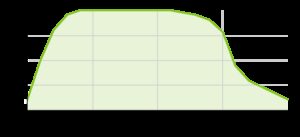How to Plan a road trip with an EV
Planning a road trip in your EV? Here are some tips on making the journey as smooth as you can.
Last updated: Aug 01, 2024 • 6 min read

Summary
Before you set off on a long-distance journey in an electric vehicle, it's important to do a small amount of preparation. In this guide you'll find some key recommendations that will allow you to charge effectively en route.
- Check how far your EV can travel and the type of chargers it's compatible with.
- Plan your journey to include stops with en route chargers.
- Consider the fact that some chargers might not be immediately available, so factor in extra time to complete your journey.
Essential pre-departure checks for your electric vehicle
Vehicle inspection checklist
- Charge your battery to 80% or more
- Make sure all lights work
- Test your brakes
- Ensure your tyres have the correct pressure for the expected load
- Pack your charging cable
Battery status and range assessment
When going a long way, a bit of planning goes a longer way. Before you set off, it’s critical that you're aware of your battery status and range to make it from A to B:
- How far you can (realistically) travel on one charge and thus how many en route charges you require. Check out our vehicle guides for more details on your specific EV.
- The type of en route rapid charger you can use (CCS / CHAdeMO / Type 2 / Tesla Supercharger).
- The power of en route rapid charge your car can accept (and thus how long you will be waiting during any charging pit stops).
If you are going to go further than your car can comfortably travel on one charge, you will need to use an en route charger. Read about Rob Cooling's 600 mile EV road trip around UK on our blog.
Tip: If you can avoid an en route charger and charge at a destination, particularly overnight, that is always a more convenient (and often cheaper) experience. Picking a hotel/long stay destination with a 7kW-22KW charger is always a great win.
Locating rapid charging stations along your route
Utilising your electric car’s built-in route planner
Some car’s usefully host chargepoint data in their sat nav, and some will build charging stops into their route planners. Perhaps the most convenient system for EV route planning comes with Tesla vehicles, whose sat nav calculates drivers’ required charging stops and likely charging duration and routes them to their own dedicated “Supercharger” en route charging network.
Leveraging third-party mapping solutions
Outside the car’s sat nav, the following tools and apps are recommended. But only when you are stationary and not driving!
- Pod Point Network - First check the Pod Point App. If there’s a conveniently located and suitable Pod Point for your journey, then you know your car will be charged reliably.
- ZapMap - Crowd sourcing and direct data feeds have made ZapMap the UK’s number one universal charge point map. You can filter to the types of chargers and/or networks that you need.
And for those travelling into Europe.
- PlugShare - PlugShare is a community based tool that guides users to public charging locations throughout Europe (and further afield). Driver participation means there are reviews and photos of thousands of chargepoints.
- Chargemap - Chargemap offers an alternative to Plugshare. Again, drivers can contribute to enhance Chargemap’s information via their mobile app, by adding pictures, comments, charging stations and even edit useful information.

Tip: We recommend not using the very last possible rapid charger; use the one before the penultimate charger en route. Flying by the seat of your pants may briefly feel thrilling, but if that charger fails, or there’s a queue, or you end up using more power than expected (e.g. uphill), then the waiting around is in no way a thrilling experience!
What to anticipate at rapid charging stations
Understanding different access methods
The common methods include apps, contactless card readers, RFID cards and some just plug and play (Tesla Superchargers). For details on these, please see our guide on public charging access methods.
Evaluating charger availability
When choosing an en route rapid charging location, you should consider the likelihood that it is available when you arrive. Some rapid chargers show their live status, but ultimately this is liable to change while you are driving to the site, which means the best bet is to pick sites with numerous chargers (particularly if you can see there are several available at that time).
This facet of EV motoring is starting to improve, but many sites only have 1 or 2 chargers, so there is a chance that you have an occasional wait.
Deciphering charging speed and expected waiting time
How fast your car rapid charges depends on how much power the chargers can offer and how much power your car can accept - but also where you are in the state of charge (and a little on the ambient temperature). Unlike a 7kW charger which almost exclusively charges at 7kW regardless of how full your battery is, electric cars manage their rapid charge rate to protect the battery.
Different cars’ rapid charging profiles vary, but an approximate typical profile is shown below. This illustrates that it's quickest to charge from 20% to 80%, but charging to 100% can take a long time.

Tip: We recommend rapid charging from something like ~20% to ~80% full to minimise the time spent at the charger. If you arrive almost empty the charge rate will take a little time to “warm up”, while the last few kWhs typically take longer to fill than it’s worth waiting for vs heading for the next charging opportunity.
Essential tips and insights for long range EV road trips
Ultimately long journeys in electric cars are similar to long road trips in conventional cars, so the following tips are valid for all.
- Perform important vehicle checks before you set off
- Take regular breaks (you’ll soon notice how well this fits with en route charging!)
- Stop when you are tired
- Take snacks and drinks (whilst being careful to ensure they do not unduly distract the driver)
- It is better to get there late than in a damaged car/not at all
- Stay zen, the traffic does not improve no matter how angry you get
